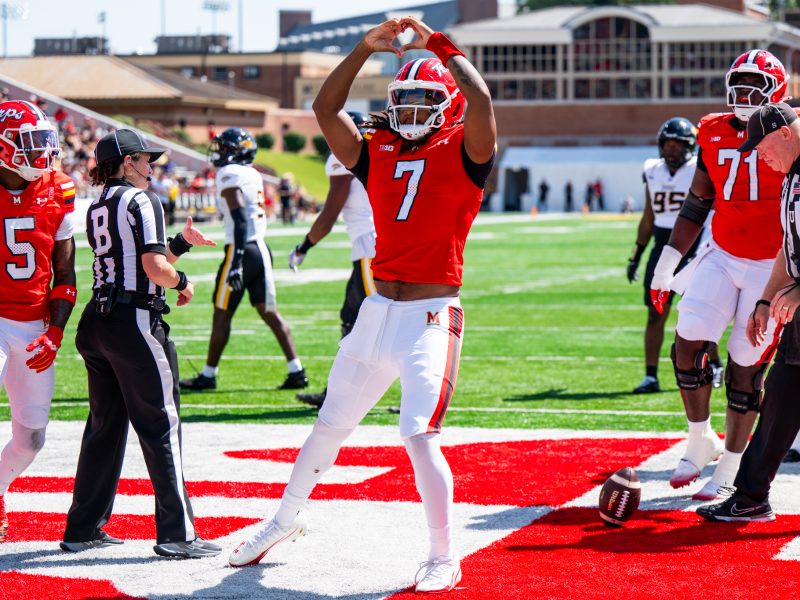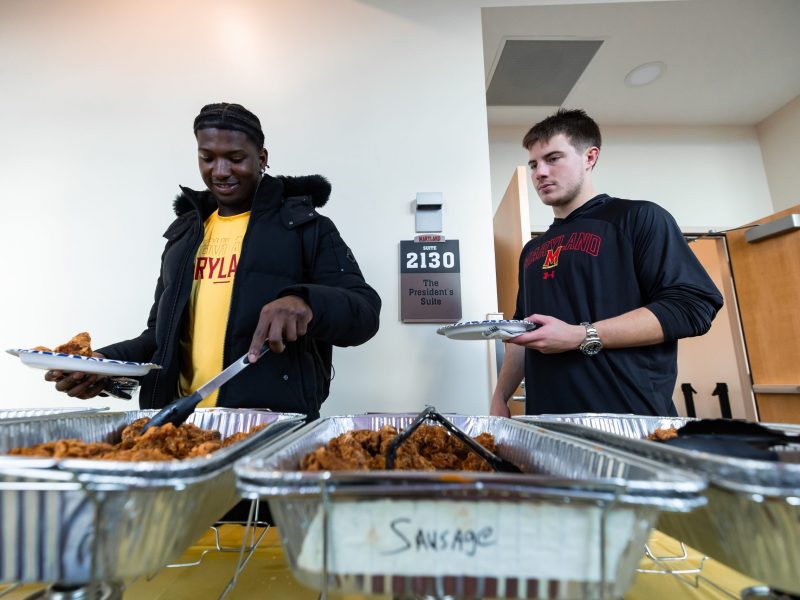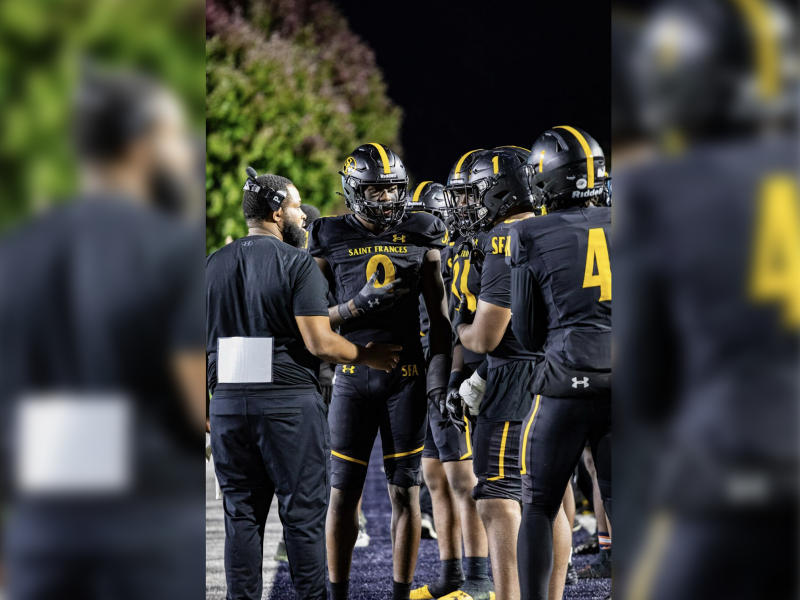Michael Locksley knew the importance of the situation. A touchdown likely won the game. A field goal tied it and gave Illinois another opportunity.
Maryland ran with Antwain Littleton II on third-and-6. He lost a yard, which brought Jack Howes on to make a 48-yard field goal. With 1:31 remaining, the Illini needed just seven plays to construct a game-winning drive punctuated by a walk-off field goal. The worst-case scenario outcome Locksley imagined came true, and his team lost for the second straight week.
“Anytime we make calls like that, it’s easy for us to second guess them,” Locksley said.
The questionable call was doomed from the start. The run was intended to go to the right. But staring down a defense that loaded up that side, the Terps flipped the play to run to the left. So did the Illini, and Littleton ran into a swarm of five Illinois defenders who breached the line and brought him down for a loss.
“We thought we could put a body on a body,” Roman Hemby said. “It didn’t work out.”
Maryland has run plays prepared for third-and-medium situations like the one the Terps found themselves in, Locksley said. Hemby, who ran for 5.8 yards per carry and had three runs of 10 or more yards but wasn’t on the field for the decisive play, said it’s a scenario the team practices often.
[Maryland football falls to Illinois on game-winning field goal, 27-24, for second consecutive loss]
The play took the ball away from Taulia Tagovailoa, who was enjoying one of his most efficient games of the season. The quarterback completed 67.5 percent of his passes, his third highest rate in a game this year, and averaged 6.6 yards per completion on third downs Saturday.
Locksley and Josh Gattis expected a lighter box given the down and distance, which would have made for a more favorable defense to run against.
“We made that call because we obviously expected a look,” Locksley said. “We didn’t get the look, maybe.”
Maryland had two timeouts at its disposal. If Locksley truly didn’t get the defense he hoped, he could have used one to change the call. But the Terps stuck to the play, a 1-yard loss when they needed six. Locksley wanted to keep the timeouts to potentially get the ball back if his defense forced a quick three-and-out, the coach said. He never got that chance.
Locksley said he never considered trying to convert on fourth down if Maryland had picked up more yardage. The field goal unit was ready. It was always going to be their turn, and the coach knew he had a defense that was reliable on Saturday to fall back on that could secure overtime.
[A Maryland football commit didn’t have any offers — then he switched positions]
The coach trusted Howes, who missed from 45 yards earlier in the game and is 7-for-13 on the season. The kicker rewarded that faith. Maryland’s defense did not.
Locksley had good reason to trust his defense — the unit forced punts on Illinois’ three previous drives. But the group was depleted by that point in the game. Tarheeb Still and Dante Trader were already out, and Beau Brade missed a chunk of the second half with an injury.
That meant a secondary with Corey Coley Jr. at cornerback had to stop the Illini from scoring with over a minute left. Luke Altmyer targeted Coley on Illinois’ second play of the drive for a 29-yard completion. A 12-yard pickup then a nine-yard run gave kicker Caleb Griffin a 43-yard chance.
Griffin’s career long is 52 yards. His team got him in range with ease.
“We didn’t make a play when the play was there for us to make,” Locksley said.
His boot narrowly edged past the right upright. Maryland players’ heads hung as they trotted off the field in dejection and Illini players swarmed their kicker. The momentum the Terps built through a 5-0 start was gone in a flash after two straight losses.
The sting from their loss to Ohio State lingered for two days. They’ll have two weeks to let this one stew.



